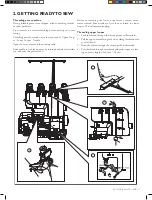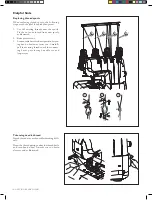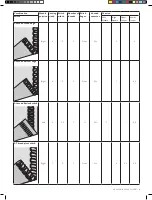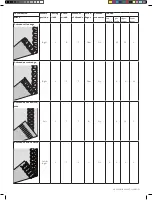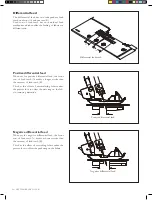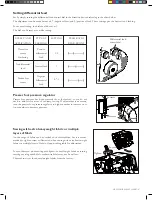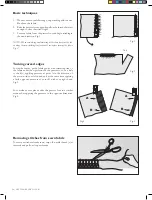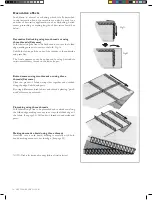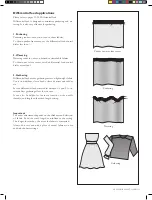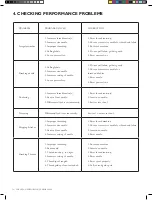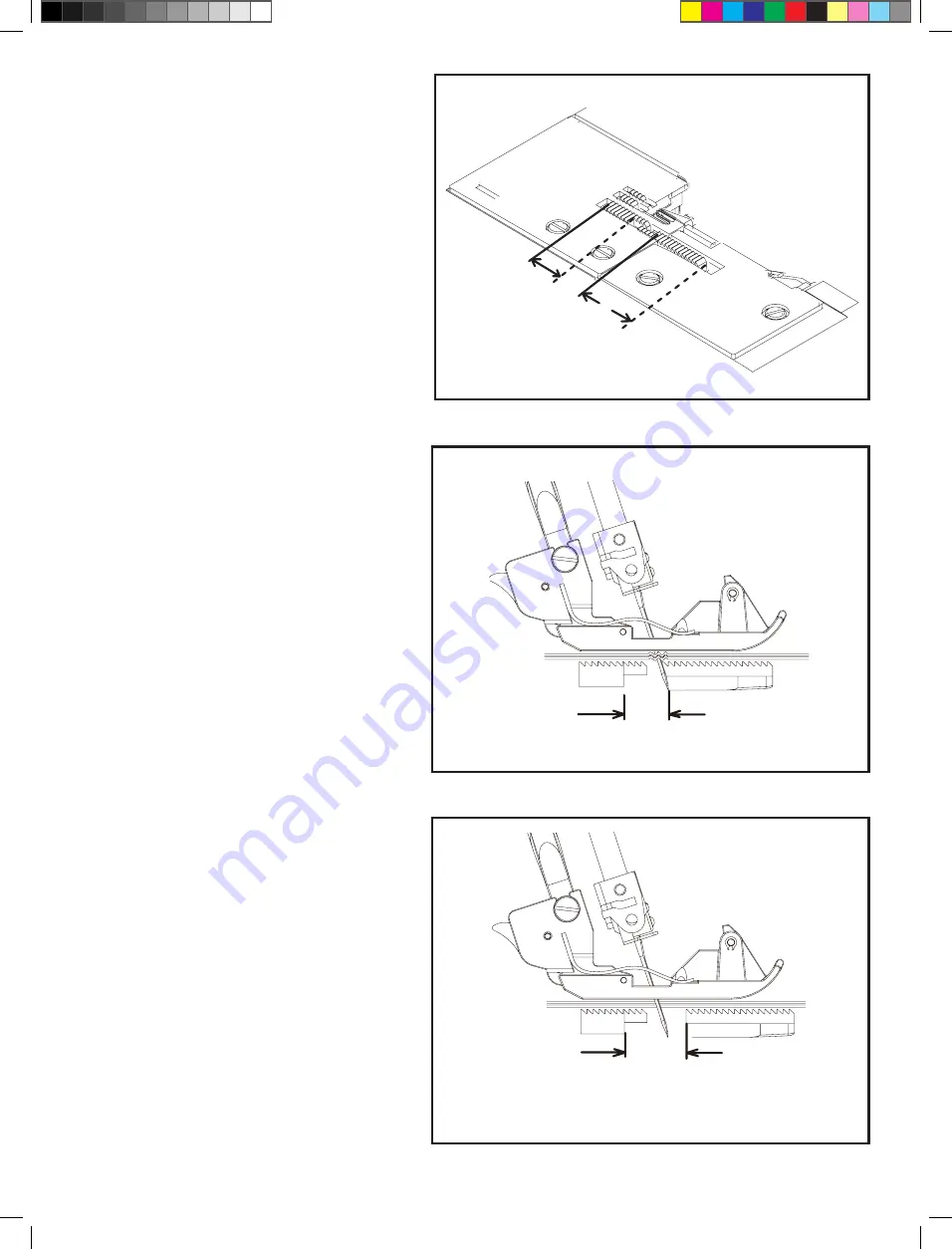
26 – GETTING READY TO SEW
Differential feed
The differential feed has two independent feed
teeth, one front (A) and one rear (B).
Each row of feed teeth has an individual feed
mechanism which enables the feeding of fabric at a
different ratio.
Positive differential feed
Differential feed teeth
Negative differential feed
A
B
Positive differential feed
When set for positive differential feed, the front
row of feed teeth (A) makes a longer stroke than
the rear row of feed teeth (B).
This has the effect of accumulating fabric under
the presser foot to offset the wavering on the fab-
ric, removing distortion.
Negative differential feed
When set for negative differential feed, the front
row of feed teeth (A) makes a shorter stroke than
the rear row of feed teeth (B).
This has the effect of stretching fabric under the
presser foot to offset the puckering on the fabric.


